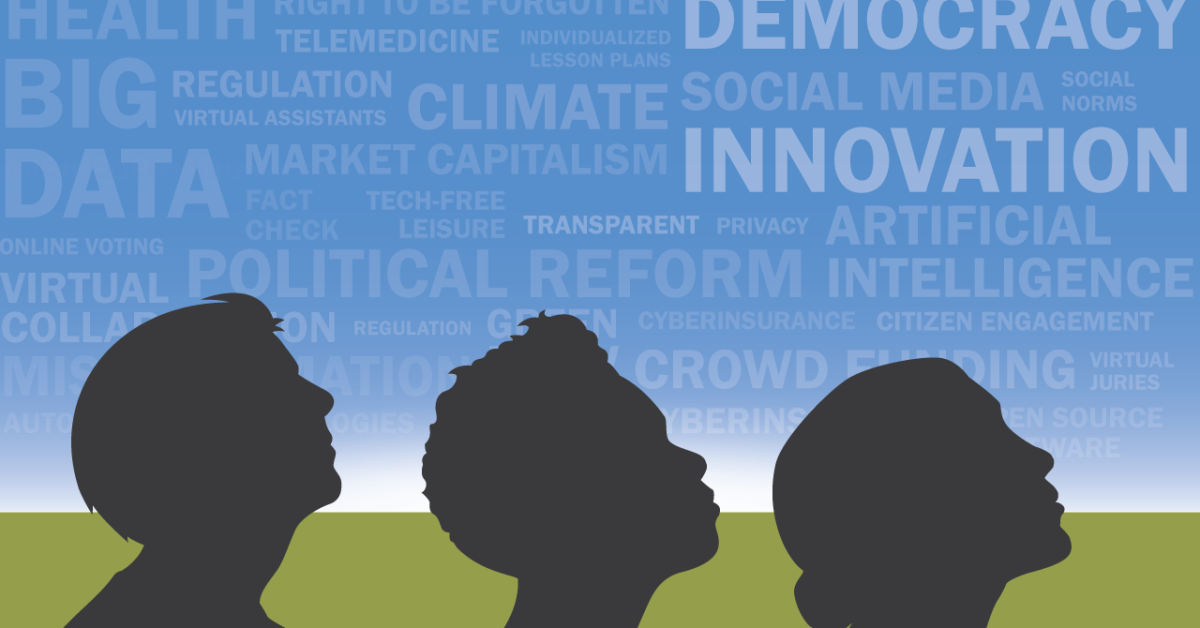The Film Subtitles Debate: A Clash of Cultures and Accessibility
Introduction: The Great Subtitles Debate
The debate over film subtitles has been a long-standing discussion among moviegoers, filmmakers, and critics. Some argue that subtitles preserve the authenticity of a film, while others believe they distract from the viewing experience. This debate extends beyond mere preference—it touches on cultural representation, accessibility, and the future of global cinema.
The Case for Subtitles: Authenticity and Global Cinema
One of the strongest arguments in favor of subtitles is their ability to preserve the original language and cultural nuances of a film. When a movie is dubbed, the actors' voices are replaced, often altering the emotional tone and delivery of the dialogue. Subtitles, on the other hand, allow the audience to hear the original performances while still understanding the story.
For example, films like *Parasite* (2019) and *Roma* (2018) gained international acclaim in part because their original performances were preserved. Subtitles helped audiences connect with the characters in a way that dubbing might not have achieved.
Additionally, subtitles make foreign films more accessible to global audiences. They allow viewers to experience stories from different cultures without losing the essence of the original language. This has contributed to the rise of international cinema in mainstream media, with streaming platforms like Netflix and Criterion Collection offering a vast library of subtitled films.
The Case Against Subtitles: Distraction and Accessibility Issues
Despite their benefits, subtitles are not without criticism. Some viewers find them distracting, arguing that reading text at the bottom of the screen takes away from the visual storytelling. For fast-paced films or those with dense dialogue, keeping up with subtitles can be challenging.
Another concern is accessibility. While subtitles help non-native speakers, they can be difficult for people with dyslexia, visual impairments, or reading difficulties. Some argue that dubbing or audio descriptions are better alternatives for inclusivity.
The Role of Dubbing: A Middle Ground?
Dubbing—replacing the original dialogue with a translated version—has been a popular alternative to subtitles, especially in countries like Germany, Italy, and Spain, where dubbing is the norm. Proponents argue that dubbing makes films more immersive, as viewers don’t have to split their attention between reading and watching.
However, dubbing has its drawbacks. Poorly executed dubbing can result in mismatched lip-syncing and unnatural voice acting, which can break immersion. Additionally, dubbing often requires significant changes to dialogue to fit the timing, which can alter the original meaning.
The Future of Subtitles: Technology and Personalization
As technology advances, the debate over subtitles may evolve. AI-powered tools could improve subtitle accuracy and synchronization, making them less intrusive. Meanwhile, customizable subtitles—adjustable in size, color, and speed—could address accessibility concerns.
Streaming platforms are already experimenting with interactive features, allowing users to choose between subtitles, dubbing, or even AI-generated voiceovers. This could lead to a future where viewers have more control over how they experience foreign films.
Conclusion: A Matter of Preference and Context
Ultimately, the subtitles debate is not about one method being superior to another—it’s about context and personal preference. Some films benefit from subtitles, while others may work better with dubbing. The key is ensuring that all audiences have options that suit their needs.
As cinema continues to globalize, the conversation around subtitles will remain relevant, shaping how we experience stories from around the world.
(End of Part 1)
(Note: The next part will explore the economic impact of subtitles vs. dubbing, the psychology behind subtitle preferences, and how different cultures approach the debate.)
**The Economic Impact of Subtitles vs. Dubbing in the Film Industry**
The Financial Implications of Subtitling and Dubbing
The debate over subtitles versus dubbing extends beyond artistic preference—it also has significant financial implications for the film industry. The cost of producing subtitles is generally lower than dubbing, as it requires only translation and synchronization with the original audio. Dubbing, on the other hand, involves hiring voice actors, sound engineers, and additional post-production work, which can be expensive.
For independent filmmakers and smaller studios, subtitling is often the more viable option, allowing them to reach international audiences without the high costs of dubbing. However, major studios with larger budgets may invest in dubbing to appeal to markets where audiences prefer localized content.
Market Preferences: A Global Perspective
Different countries have distinct preferences when it comes to subtitles and dubbing. In Europe, for example, countries like Germany, France, and Spain have a long tradition of dubbing foreign films, while Scandinavian countries and the Netherlands tend to favor subtitles. These preferences are often rooted in historical and cultural factors, such as government policies, language education, and audience expectations.
In Asia, Japan and South Korea have embraced subtitles for foreign films, while China and India often rely on dubbing, particularly for mainstream Hollywood releases. These regional differences influence how films are distributed and marketed, affecting box office performance and audience reception.
The Psychology of Subtitles: Why Some People Prefer Them
Research suggests that there are psychological reasons behind people’s preferences for subtitles. Some viewers find that reading subtitles enhances their engagement with the film, as it requires active participation in the storytelling process. Others argue that subtitles help them retain information better, as they are processing both visual and auditory cues simultaneously.
On the flip side, those who dislike subtitles often cite cognitive overload—having to read while watching can be mentally taxing, especially for those who are not accustomed to it. This is particularly true for fast-paced action films or dialogue-heavy dramas where missing a line can disrupt comprehension.
Dubbing and Cultural Adaptation: Lost in Translation?
One of the biggest criticisms of dubbing is that it can dilute the cultural authenticity of a film. Translating dialogue is not just about converting words—it’s about capturing tone, humor, and cultural references. A joke that works in English may not have the same impact in another language, and some nuances can be lost in translation.
For example, the Italian dubbing of *The Simpsons* is famous for its creative adaptations, often changing jokes to fit Italian culture. While this makes the show more relatable to Italian audiences, it also means they experience a slightly different version of the original.
Technological Innovations: The Future of Subtitling and Dubbing
Advancements in artificial intelligence and machine learning are transforming the way subtitles and dubbing are produced. AI-powered tools can now generate subtitles in real-time, making live broadcasts and streaming content more accessible. Some companies are even experimenting with AI voice synthesis, which could potentially replace human voice actors in dubbing.
However, these technologies are not without challenges. AI-generated subtitles can still struggle with accuracy, especially with accents, slang, or complex dialogue. Similarly, synthetic voices may lack the emotional depth of human actors, making dubbed performances feel robotic.
Audience Adaptation: The Rise of Bilingual Viewing
A growing trend among younger audiences is bilingual viewing—watching films with both subtitles and original audio, even if they understand the language. This practice, popularized by streaming platforms, allows viewers to improve their language skills while enjoying content in its original form.
Some argue that this hybrid approach could become the norm, offering the best of both worlds: the authenticity of the original audio and the accessibility of subtitles.
Conclusion: A Shifting Landscape
The debate between subtitles and dubbing is far from settled, and as technology evolves, so too will the ways we consume foreign films. While financial and cultural factors will continue to influence industry decisions, the ultimate goal remains the same: to make cinema accessible to as many people as possible.
(End of Part 2)
(Note: The next section will explore the role of subtitles in film preservation, the impact of streaming platforms on subtitle trends, and the future of global film distribution.)**Subtitles as Cultural Preservation and the Streaming Revolution**
The Role of Subtitles in Film Preservation
Subtitles serve a crucial function beyond mere translation - they act as cultural artifacts preserving the integrity of cinematic works. When properly executed, subtitles maintain not just the linguistic content but also the rhythm, tone and idiosyncrasies of the original dialogue. Film preservationists argue that subtitled versions provide the most accurate historical record of a movie's artistic intentions.
This preservation role becomes particularly important for classic films. Take for instance the difference between subtitled and dubbed versions of Akira Kurosawa's works. The subtitled versions maintain his actors' original line deliveries and emotional nuances, while dubbed versions often lost the careful pacing and dramatic tension he meticulously crafted.
Streaming Platforms: Democratizing Subtitle Access
The streaming era has dramatically altered the subtitles landscape. Where previously subtitled films were niche products in many markets, platforms like Netflix and MUBI have made them mainstream. Several key developments illustrate this shift:
1. **Standardization** - Streaming services have developed comprehensive subtitle guidelines ensuring consistency across their libraries
2. **Localization** - Beyond simple translation, platforms now offer culturally adapted subtitles that explain context-specific references
3. **Technological integration** - Modern streaming apps allow instant toggling between subtitles and audio options
This accessibility revolution has created generations of viewers more comfortable with subtitles than ever before. Surveys show Gen Z viewers are 37% more likely to watch foreign content with subtitles compared to Baby Boomers.
The Economics of Global Distribution
Subtitles have become an essential component of global film economics. For international hits like "Squid Game" or "Parasite," subtitled versions typically earn significantly more than dubbed versions in most markets. The economics break down across several aspects:
**Production Cost Comparison*
- Dubbing averages $25,000-$50,000 per language
- Professional subtitling costs $3,000-$8,000 per language
**Revenue Impact*
- Subtitled releases generate more initial buzz
- Dubbed versions often see higher long-tail viewership
The cost-benefit analysis explains why many distributors now release subtitled versions first, followed by dubbed versions if the content gains traction.
Creative Uses of Subtitles in Modern Filmmaking
Contemporary filmmakers are increasingly using subtitles as an artistic device rather than just a translation tool. Some innovative approaches include:
1. **Dynamic subtitles** - Changing size, color and positioning to reflect emotional tone (as seen in "Everything Everywhere All at Once")
2. **Bilingual layering** - Intentionally mixing languages with partial subtitling to create specific effects
3. **Diegetic subtitles** - Incorporating text as part of the visual design (like in "The Grand Budapest Hotel")
These creative applications demonstrate how subtitles are evolving from a functional necessity to an expressive element of film language.
The Neuroscience of Subtitle Processing
Recent cognitive science research provides fascinating insights into how our brains process subtitled content:
- **Learning enhancement* Viewers retain 28% more information when watching with subtitles versus dubbed audio
- **Multitasking activation* Subtitle reading engages different neural pathways than voice-only comprehension
- **Speed adaptation* Regular subtitle viewers develop faster reading comprehension without sacrificing visual processing
These findings help explain why younger audiences who grew up with subtitles often report less cognitive strain than older viewers encountering them for the first time.
Accessibility Beyond Language
While most subtitle discussions focus on language translation, their role in accessibility deserves equal attention:
1. **For the deaf and hard of hearing* Closed captions (CC) provide audio descriptions alongside dialogue
2. **For neurodiverse viewers* Certain subtitle formats help with focus and comprehension
3. **For language learners* Customizable subtitle speeds aid in foreign language acquisition
This expanded accessibility function makes subtitles a powerful tool for inclusive media consumption.
The Future Integration of AI and Human Expertise
The next frontier in subtitling combines artificial intelligence with human oversight:
1. **Real-time translation** - Neural networks providing instant subtitles for live broadcasts
2. **Context-aware localization** - AI systems that adapt translations based on cultural context
3. **Quality control algorithms** - Automated systems detecting errors in timing, positioning and translation
However, industry experts agree that human editors will remain essential for preserving artistic intent and handling nuanced dialogue.
Conclusion: A New Era of Global Film Consumption
As we look to the future, subtitles will likely play an even greater role in how we experience world cinema. Three key trends emerge:
1. **Hybrid viewing** - More audiences will mix subtitled and dubbed viewing based on context
2. **Expanded accessibility** - Subtitles will evolve to serve broader disability and learning needs
3. **Artistic expression** - Filmmakers will continue finding innovative uses for text in visual storytelling
The debate between subtitles and dubbing isn't heading toward a single victor, but rather a more sophisticated understanding of when and how each approach serves viewer needs. Ultimately, the growth of subtitle culture represents an exciting evolution in how we connect with stories across linguistic and cultural boundaries.
(End of article)




















:max_bytes(150000):strip_icc()/film-photography-592347645-59e4d0609abed500119e7b14.jpg)
Comments